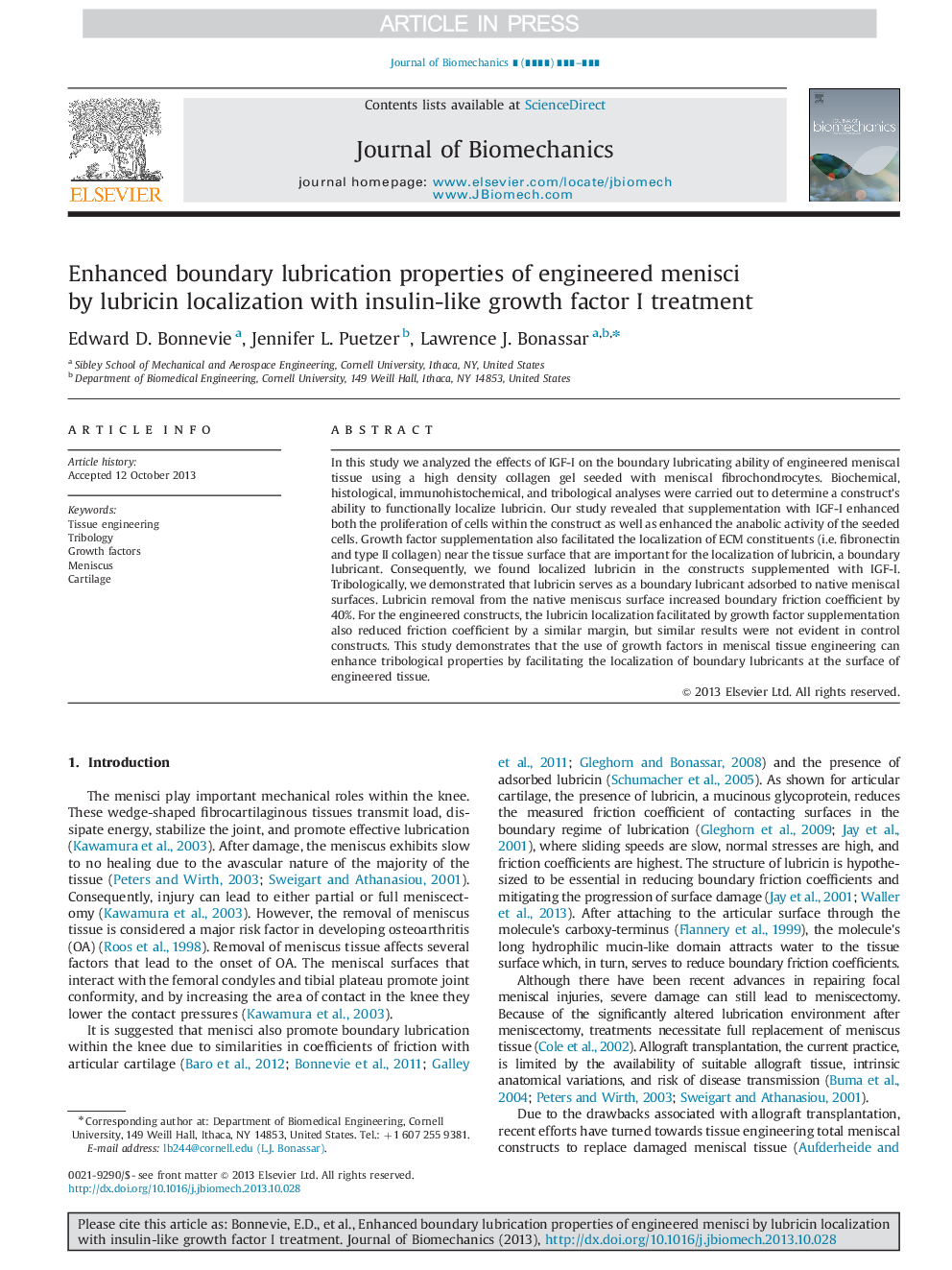| Article ID | Journal | Published Year | Pages | File Type |
|---|---|---|---|---|
| 10432082 | Journal of Biomechanics | 2014 | 6 Pages |
Abstract
In this study we analyzed the effects of IGF-I on the boundary lubricating ability of engineered meniscal tissue using a high density collagen gel seeded with meniscal fibrochondrocytes. Biochemical, histological, immunohistochemical, and tribological analyses were carried out to determine a construct's ability to functionally localize lubricin. Our study revealed that supplementation with IGF-I enhanced both the proliferation of cells within the construct as well as enhanced the anabolic activity of the seeded cells. Growth factor supplementation also facilitated the localization of ECM constituents (i.e. fibronectin and type II collagen) near the tissue surface that are important for the localization of lubricin, a boundary lubricant. Consequently, we found localized lubricin in the constructs supplemented with IGF-I. Tribologically, we demonstrated that lubricin serves as a boundary lubricant adsorbed to native meniscal surfaces. Lubricin removal from the native meniscus surface increased boundary friction coefficient by 40%. For the engineered constructs, the lubricin localization facilitated by growth factor supplementation also reduced friction coefficient by a similar margin, but similar results were not evident in control constructs. This study demonstrates that the use of growth factors in meniscal tissue engineering can enhance tribological properties by facilitating the localization of boundary lubricants at the surface of engineered tissue.
Related Topics
Physical Sciences and Engineering
Engineering
Biomedical Engineering
Authors
Edward D. Bonnevie, Jennifer L. Puetzer, Lawrence J. Bonassar,
